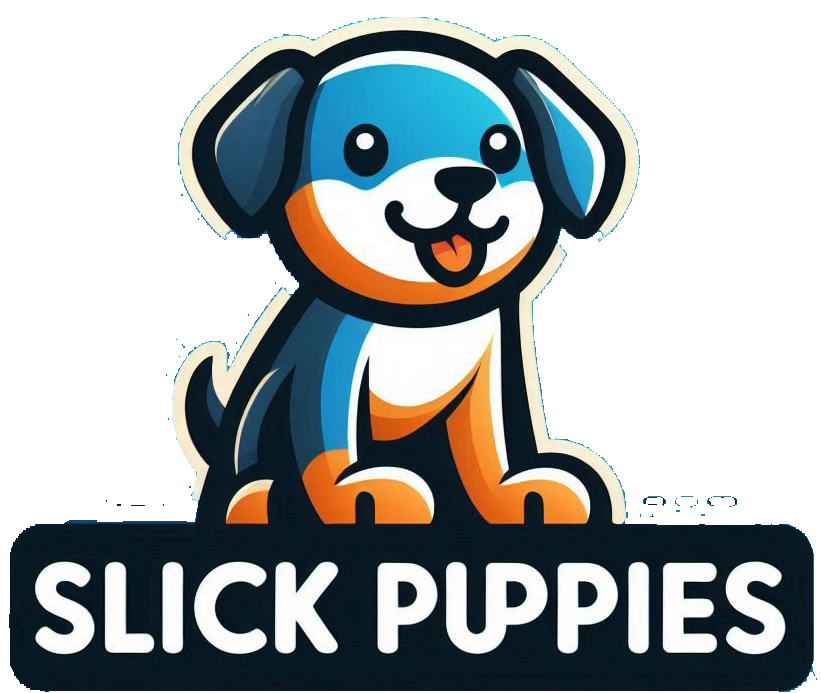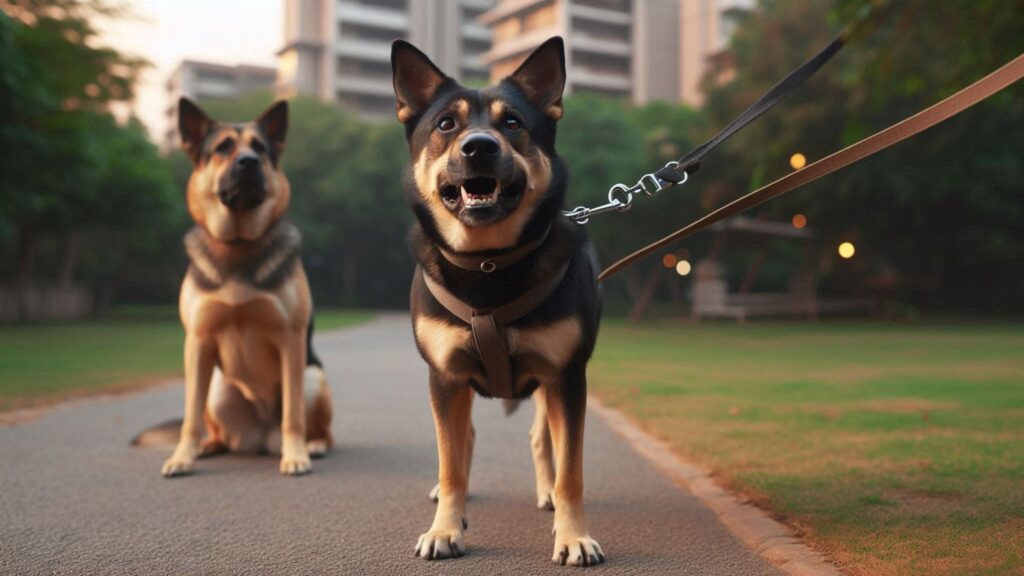Dogs are generally social animals, but there are several reasons why a dog might react aggressively toward an unfamiliar dog. One reason could be that some dogs miss out on socialization during their sensitive period, which ends by 14 weeks of age. Without this early exposure to new dogs, some dogs may develop aggressive behavior when they meet unfamiliar dogs.
Sometimes, things don’t go as planned during socialization, and a puppy might get scared by another dog, which can lead to a lasting fear and trigger aggressive responses later. Even dogs that have been well-socialized can still show aggression toward other dogs due to genetic factors and past experiences. (For more information, see the handout “Puppy Behavior and Training – Socialization and Fear Prevention.”)
Other factors can also contribute to aggression. For example, if your dog often encounters other dogs from behind a barrier—like a fence, window, or leash—it can cause frustration and territorial behavior. This can lead to aggressive reactions when they finally meet dogs face-to-face.
In some cases, your dog might not show aggression right away. They may start off friendly, playing nicely with other dogs, but then suddenly snap, growl, or bark. Aggression like this can be trickier to understand because there are several possible reasons behind it. One possibility is that your dog could be in pain, so it’s worth having your vet check them out.
Another reason could be that the other dog’s communication style is different from your dog’s. Not all dogs “speak” the same way. Some use more subtle body language to communicate. For example, your dog might have tried to say “back off” by stepping away or looking away, but if the other dog didn’t pick up on those signals, your dog might escalate to stronger signals like growling or snapping.
If your dog is showing aggression, it’s a good idea to consult a behavior specialist. Aggression can have multiple causes, so it’s important to look at the bigger picture and get a professional assessment.
What are Some Common Types of Inter-Dog Aggression?
Dogs can show aggression for different reasons, and understanding the cause is important for addressing it properly. Here are some common types of aggression:
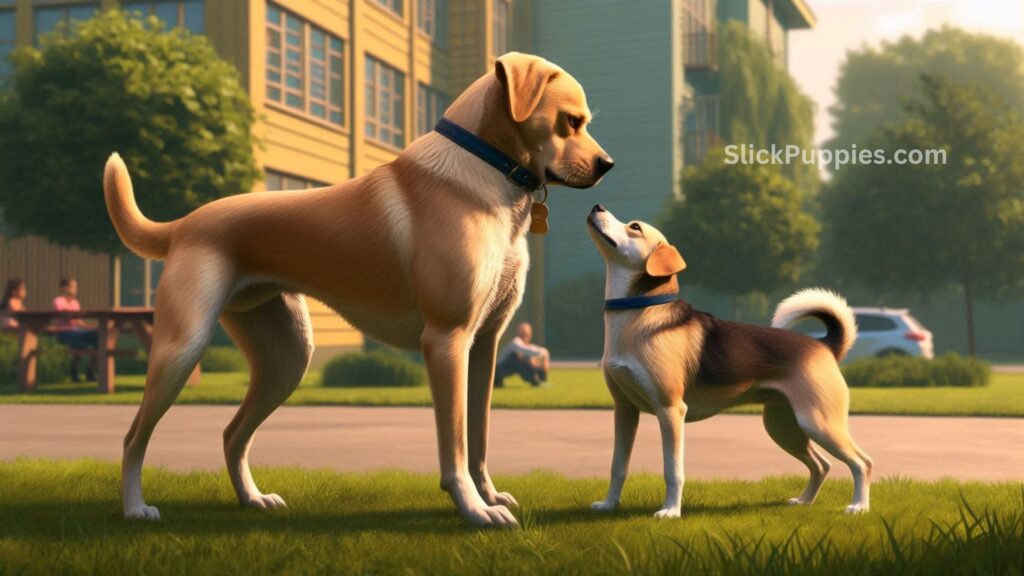
- Fear-based aggression: At first, a fearful dog might avoid, look away, or bark and back off. These signs of fear may go away over time, but it’s important to recognize them early on.
- Frustration-based aggression: This happens when a dog can’t get close to another dog, often because of a barrier. Dogs with this type of aggression might be friendly when there’s no barrier, but get frustrated and aggressive on a leash. Some people call this “leash aggression” or “reactivity,” though those terms don’t fully explain why the dog behaves that way. It’s also risky to remove the barrier to “test” the dog’s reaction—doing so can be dangerous.
- Territorial aggression: Some dogs bark or lunge at others when they approach their home, property, or vehicle. This is a protective behavior.
- Reinforcement-related or learned aggression: If a dog gets a reward (like chasing or scaring off another dog) for barking or lunging, it may continue this behavior. Over time, it can get stronger.
- Gender-related aggression: Some dogs are only aggressive toward dogs of a specific gender, such as a male dog who’s aggressive only toward other male dogs.
- Possessive or resource-related aggression: This happens when a dog feels threatened by another dog approaching something it values, like food, a toy, or even a person.
- Predatory aggression: A dog may chase another dog in a way that’s not playful, often showing excitement and making vocal sounds. This is different from predatory behavior, which is not driven by emotion, but can still be dangerous.
By understanding why your dog is acting aggressively, you can apply the right approach to help them.
Also Read: How to Train a Dog to Stop Barking at Strangers?
Are there Any Specific Details that can help with the Assessment?
To understand what’s causing your dog’s aggressive behavior, it helps to look at the details. For instance, does your dog usually get along with most other dogs? If so, what kind of dogs seem to trigger the aggression? Are they a certain size, color, or gender? Or maybe they have a specific behavior, like being loud, high-energy, or shy? These details can help a behaviorist figure out why your dog is acting this way and create a plan to address it.
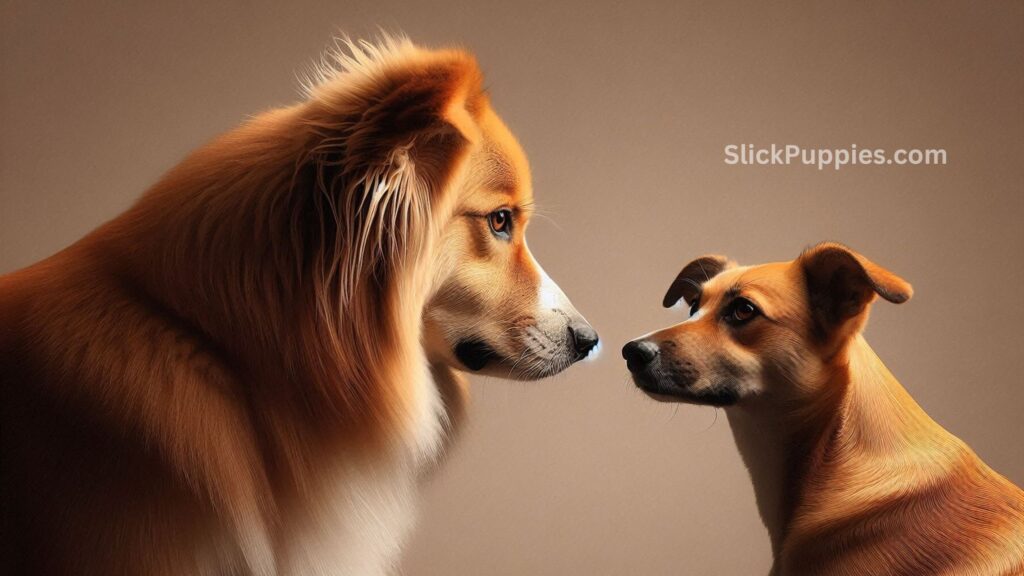
Also, notice how quickly your dog calms down after an aggressive outburst. If it takes a while to recover, that could mean the dog’s emotions were running high. In this case, the treatment plan will focus on helping your dog manage those feelings. Pay attention to the signs that show your dog is getting ready to react—like freezing or staring—which often come before barking or lunging. If your dog reacts to other dogs even when they’re far away, it could be a sign of anxiety about the interaction. That anxiety needs to be addressed so your dog can feel more relaxed and less on edge.
It’s important to stay objective and not jump to conclusions. A behavior specialist will likely ask you about what you’ve noticed to help figure out the root cause of your dog’s behavior.
Why does my dog lunge at me when another dog is in view?
When dogs get really worked up and frustrated, they can sometimes lose focus and direct their aggression towards nearby people or even other dogs they’re with. To keep everyone safe, it’s best to limit your dog’s exposure to other dogs until their treatment is progressing well. If you can’t avoid meeting other dogs, consider using a basket muzzle during walks where you might encounter them (you can check the muzzle handout for details).
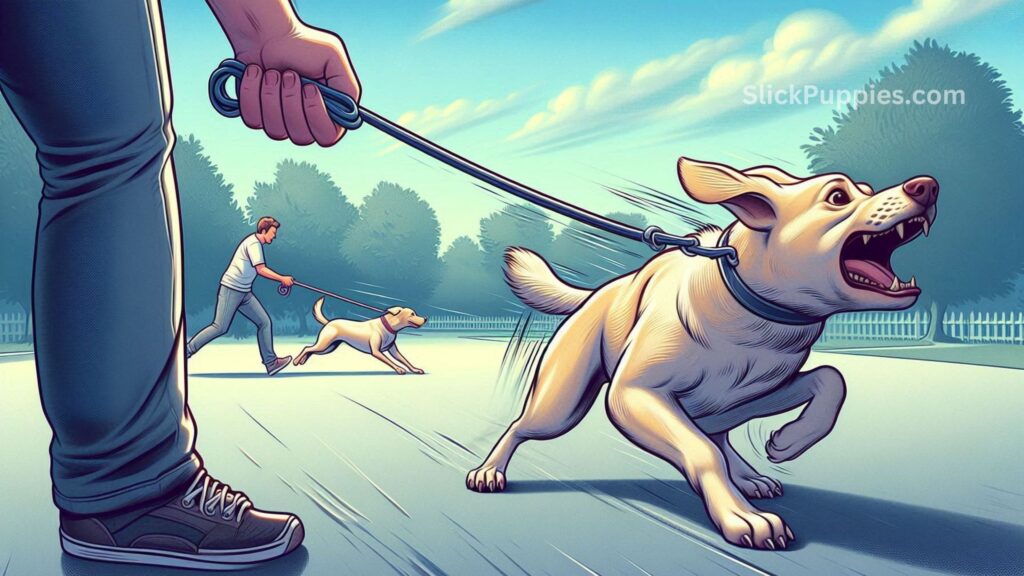
However, remember that while your dog is muzzled, they’re more vulnerable, so avoid places where off-leash dogs could approach or attack.
Also, don’t try to correct or give commands when your dog is lunging at you—just stay calm and quiet. Keep the leash steady, with just enough tension to prevent them from getting too close. Sometimes, it’s best to just stop moving and stay still, as pulling on the leash can only add to the frustration and make the aggression worse.
Also Read: How to Potty Train a 2-Month-Old Puppy?
Should I correct my dog when he is behaving aggressively toward another dog?
Punishment-based methods can actually make aggression worse, so it’s best to avoid them. Whether your dog is lunging at you (like we talked about earlier) or another dog, correcting them could make things worse by increasing their frustration and excitement. When you correct your dog, it turns into a confrontation, making it harder for them to calm down and recover from the situation.
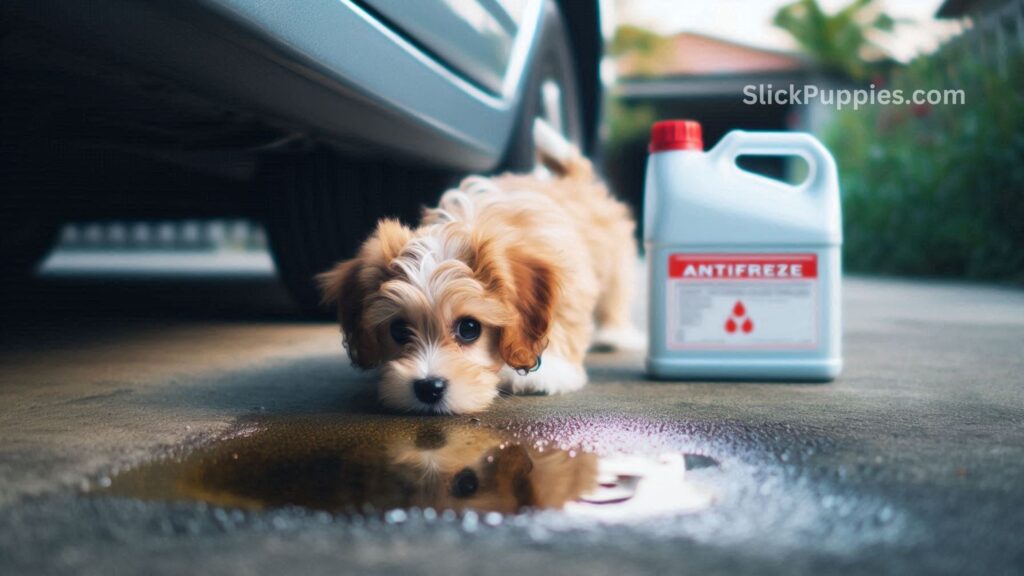
Another problem with punishment is that if you correct your dog for showing a less aggressive sign, like growling, snarling, or snapping, you’re teaching them not to use those safer signals. Instead, they might skip those and go straight to more serious actions like lunging or biting.
Your treatment plan will offer ways to reduce aggression without causing a confrontation. Check out the handout “Dog Behavior Problems – Aggression Towards Unfamiliar Dogs Part 2: Treatment” for more details.
